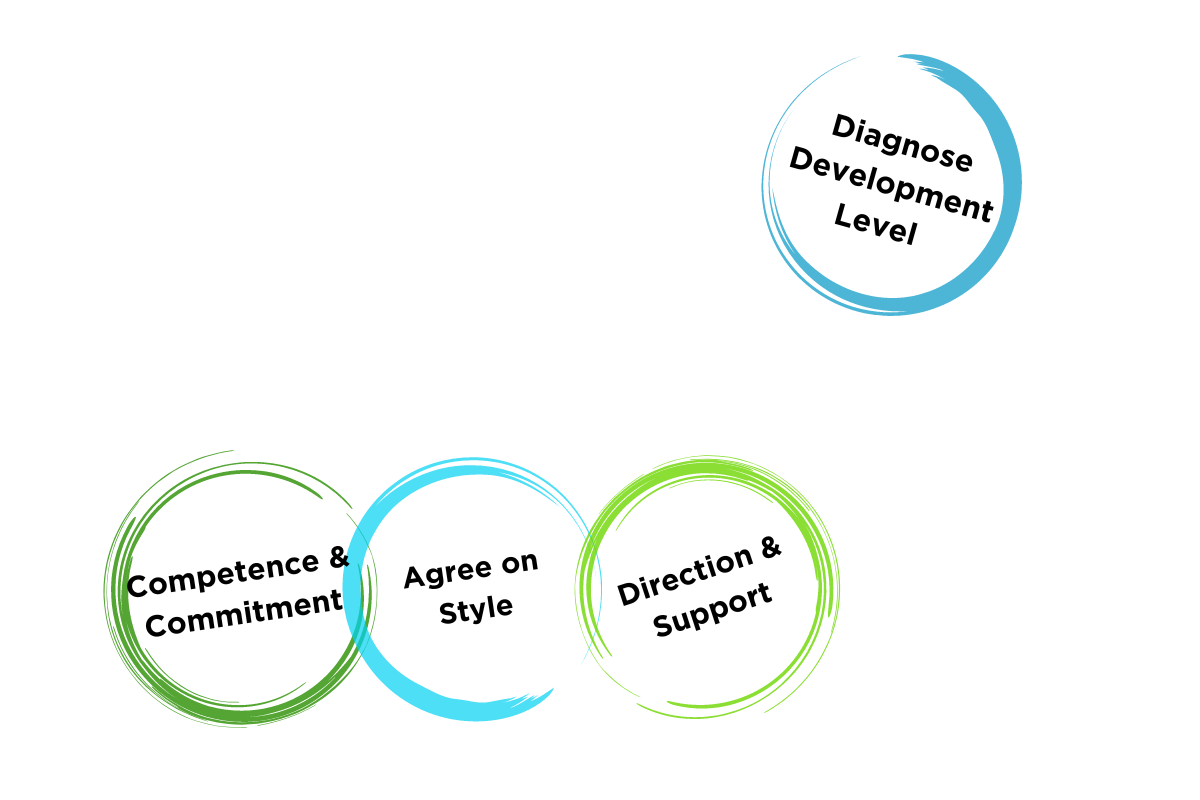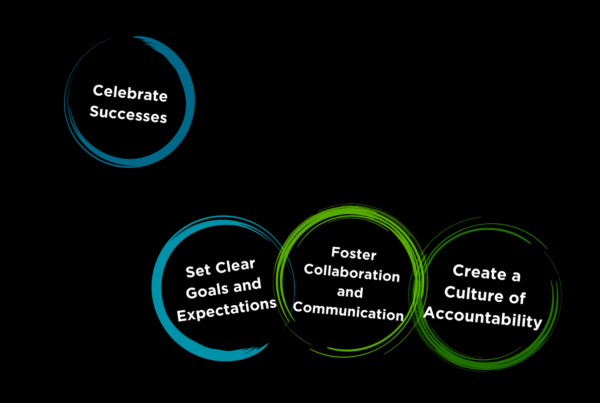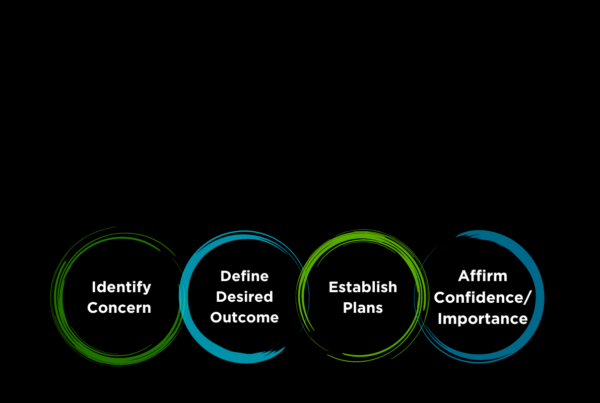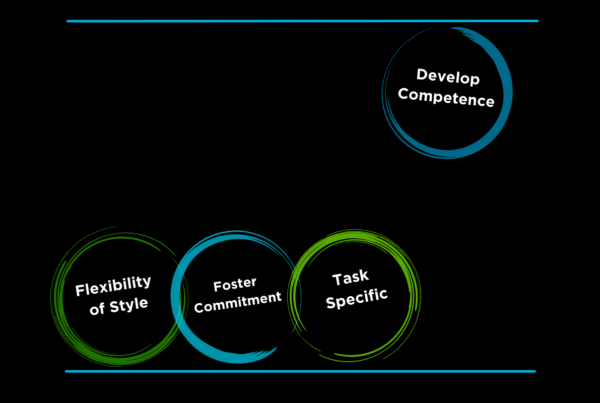Situational Leadership is a working tool for the front-line—lead hands, supervisors and managers. It is a tool of choice for developing employees’ competence in any task.
Overview of series
In Part 1, we introduced the model and discussed why it is a valuable tool for managers.
In Part 2, we identify the key building blocks you need to put the model to work for you.
In Part 3, we will explore what to do when you hit speed bumps—like regression in the development cycle.
Key concepts
1. Employee Development Level
We all progress through stages of development as we learn to master tasks. The Situational Leadership (SL) model identifies four stages or development levels, as depicted below.
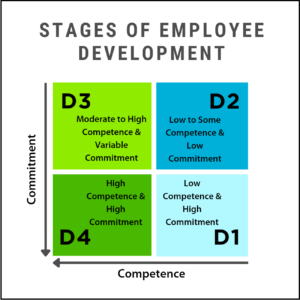
Competence can be defined as the employee’s demonstrated knowledge and skills in that task.
Commitment can be defined as their motivation or confidence to perform the task well without supervision.
2. Leadership Style
Similarly, the model identifies four leadership styles—one to match each development level.
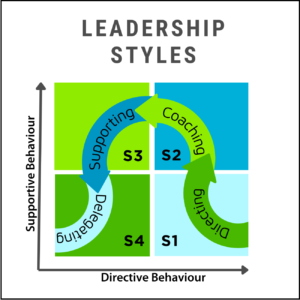
Directive behaviour can be defined as the extent to which a leader:
- Sets goals and clarifies expectations.
- Tells and shows an individual what to do, when, and how to do it.
- Supervises, monitors, and evaluates performance.
Supportive behaviour can be defined as the extent to which a leader:
- Explains why.
- Asks for input.
- Facilitates problem-solving.
- Listens and encourages.
3. Matching style to development level
Situational Leadership is called that because the best leadership style is determined, not by the employee or the supervisor. Instead, it is determined by the situation—the employee’s competence in and commitment to the given task.
The leadership style a manager uses with an employee may vary with different tasks.
To succeed, employees need two things from their manager—direction and support.
The amount of direction they need depends on their competence in the task at hand. The lower the competence, the higher the amount of direction the manager should give.
The amount of support an employee should be given depends on their commitment to performing the task well without supervision. The lower the commitment, the greater the amount of support an employee needs.
High direction is about telling the employee what the task is, explaining it in detail, explaining and demonstrating how to do it, and closely supervising their attempts to perform the task.
High support is about building the employees confidence that they can perform the task well without supervision. It includes encouraging the employee to come up with ideas and solutions, asking questions, affirming responses that are on target, and redirecting with feedback and further questions for responses that are unlikely to produce the desired result.
The graphic below illustrates how direction and support are best combined to match the development level of the employee in that task.
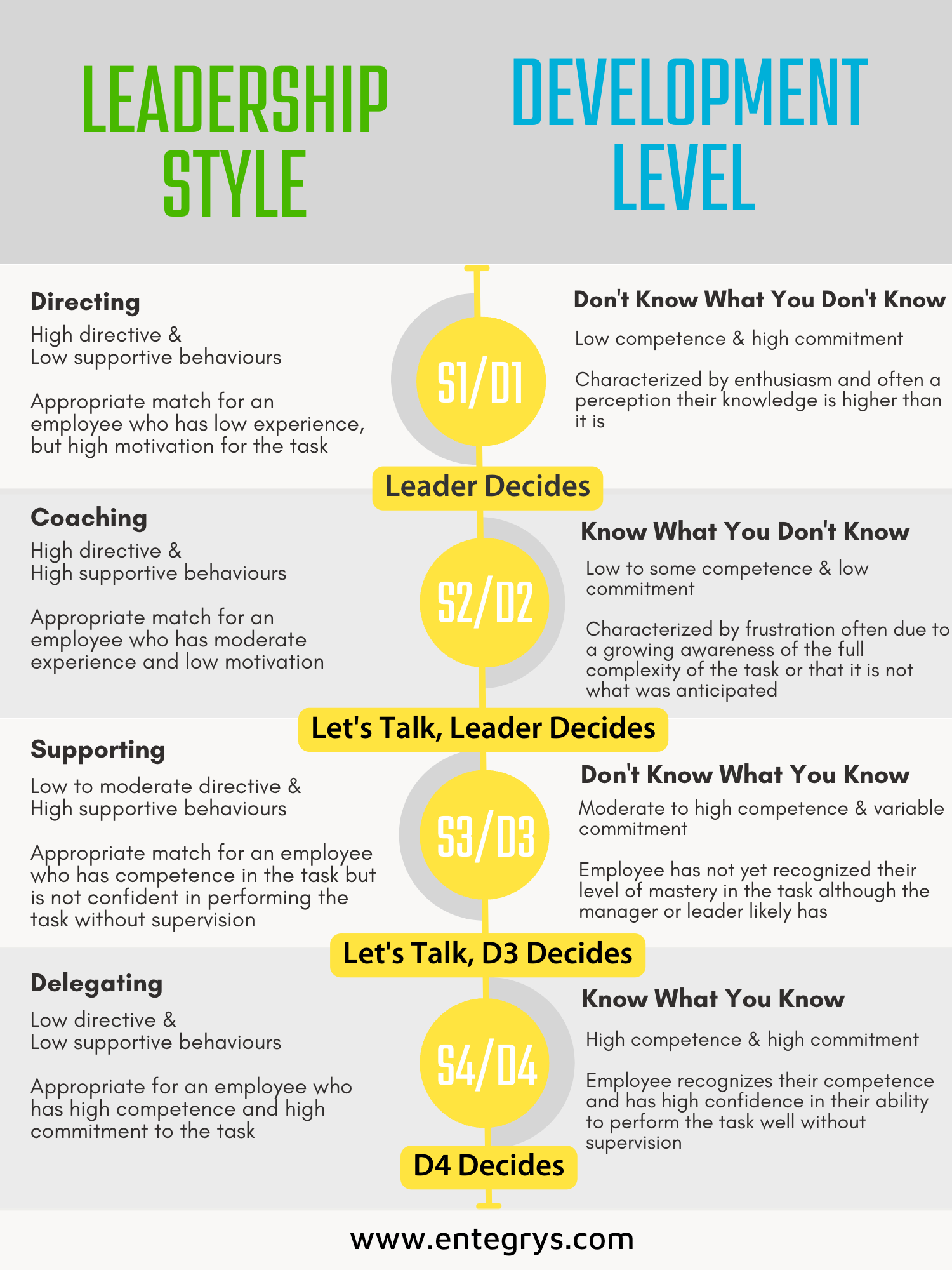
Three steps to becoming a situational leader
- Involve your employees in the process
Harvard Business School Online reports that “By involving your team members in the decision-making process, you show that you trust and value their opinion, which is a key element of building employee engagement.”
People naturally resist change. So if you or your employees are new to this leadership style, begin by sharing key concepts with them. Discuss why you want to implement this model and what changes they can expect from you as a manager. Involve them in the decision-making for the next steps of the process.
- Diagnose development level
Identify the key responsibilities/tasks in the employee’s role. Collaborate to decide on the development level the employee is at in each task. The following decision tree may help you.
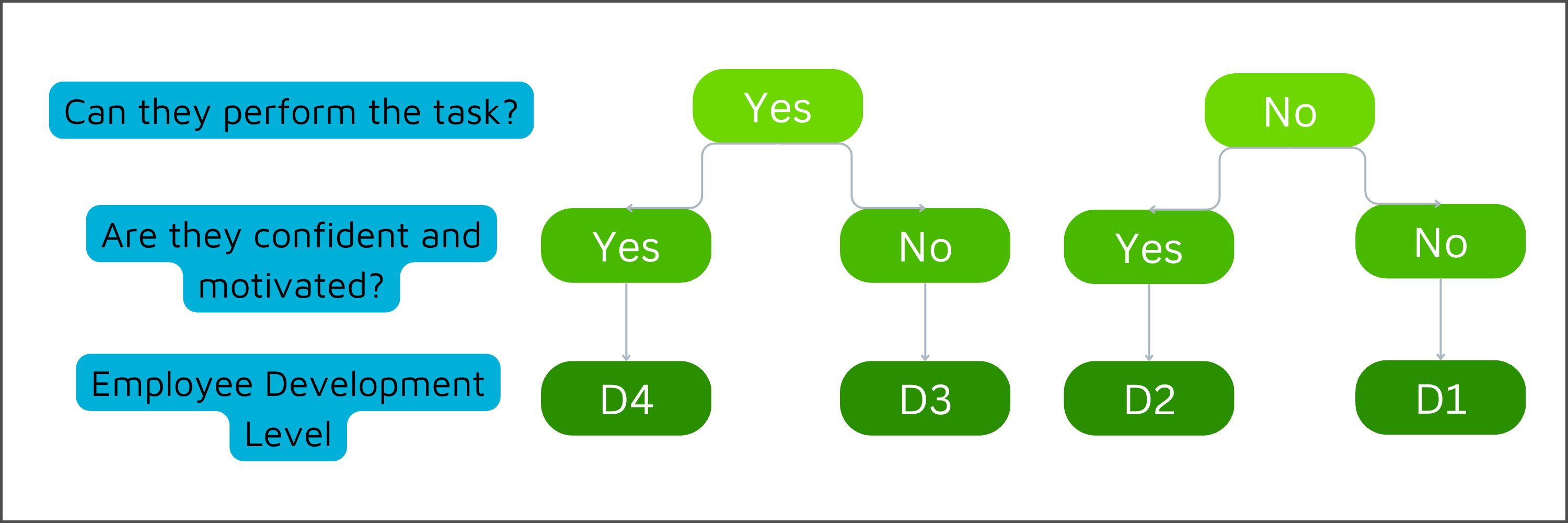
3. Agree on leadership style
Agreeing on leadership style is more than just naming the style. It is about identifying the specifics of the task and what the employee requires from you, i.e.:
- What is the task? Timeline? Quality/quantity standards?
- Are there any special circumstances or restrictions to note?
- What resources does the employee need for this task?
- What specific direction do they need from you or a designate? What support?
- How often will you touch base to provide feedback? To get an update?
When a manager matches their leadership style to the development level of the employee, the employee develops more quickly, with fewer missteps and less frustration. It makes good business sense!
Do you have what it takes to be a situational leader?
Becoming a skilled situational leader requires three important competencies.
Adaptability – Managers, like most people, are creatures of habit. Once we become comfortable with a way of being, we tend to run on autopilot. But being a skilled situational leader means breaking out of our comfort zone to adapt our style to the situation at hand. Are you willing to exercise the flexibility it will take?
Interpersonal Communication – Situational leadership is not about assigning a task and then waiting for the result. It requires a commitment to clear and open communication throughout the employee development process.
Collaboration – Situational leadership is not something we use on an employee. It is something we do with them. It means sharing decision-making and releasing control as appropriate. Are you willing?
When we actively and appropriately guide staff in developing task competence, they develop faster and to a higher level of overall performance. Higher productivity, fewer costly mistakes, fewer redos, and less downtime make good business sense!
Be sure to watch for Part 3 for tips on navigating the speed bumps.


